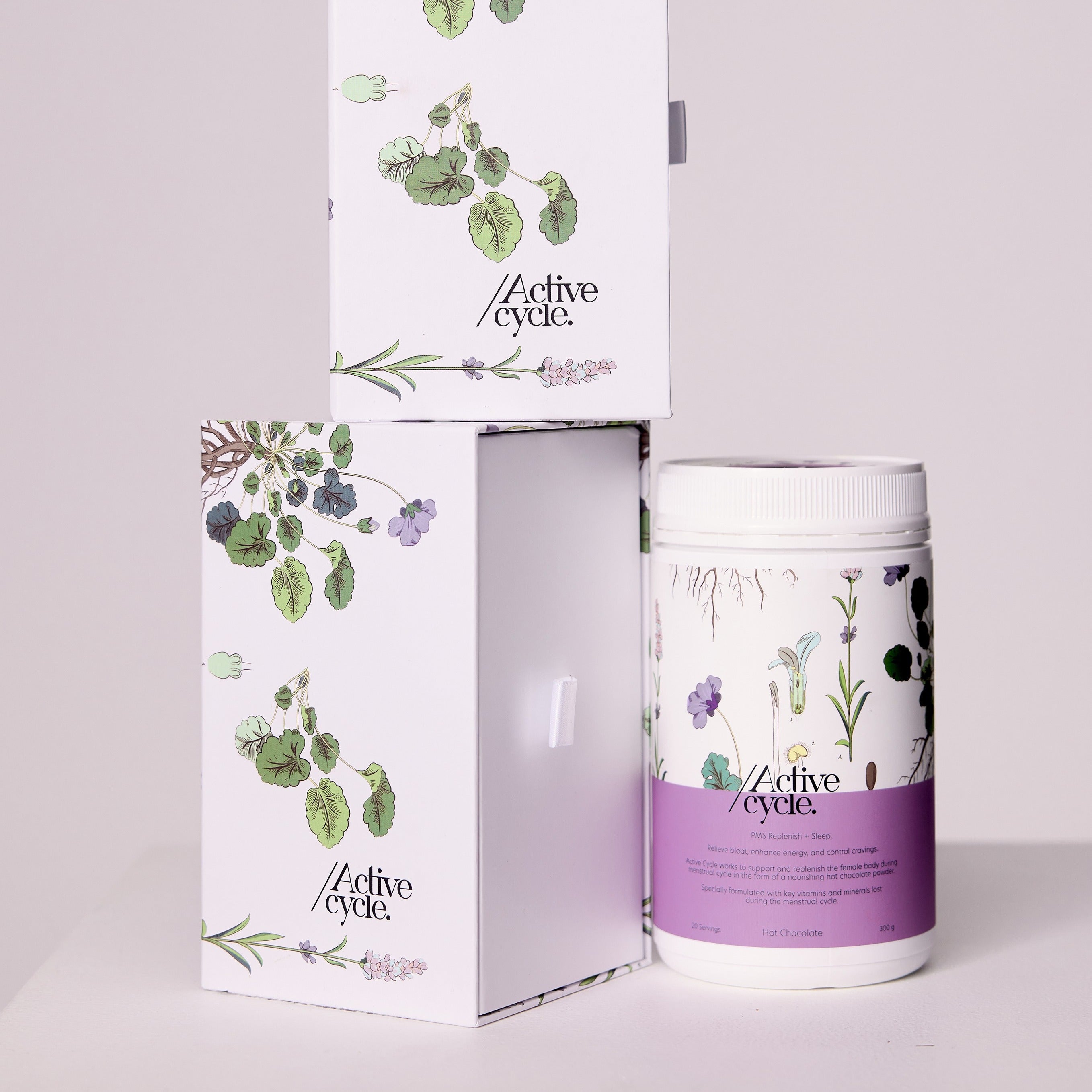We’ve all tried treating our skin health from external sources. Acne, rosacea, eczema, psoriasis, the list goes on. But have you tried supporting your skin health through supporting your gut health? Let us introduce you to the gut-skin connection.
You may have heard of the gut-brain connection, however the gut also communicates with our skin. Often referred to as the gut-skin axis both organs optimally function in a balanced state – homeostasis – through bidirectional communication that is regulated by inflammatory cells and the immune system. Both organs are our primary connection to the external environment and are vital for maintaining biological balance.
The big player in all this communication is of course the gut microbiome. Studies in the field of the gut microbiota and skin health show evidence of gut pathologies strongly linking to existing skin conditions, such as 11% of irritable bowel syndrome (IBD) sufferers developing psoriasis.
What is important to know is the what, why and how of this connection and ways we can promote a healthy gut-skin axis.
The Gut Microbiome
Our gut microbiome refers to all genes and microbes that are present within our gut. The gut microbiota, however, is all microorganisms found within our gut comprising of billions of bacteria now often described as a sole organ. Think of it as a whole other ecosystem inside us that provides protection through immune system development and regulation, as well as metabolic functions like food digestion and metabolism.
The billions of microbes within this intestinal ecosystem varies from person to person, changing somewhat throughout an individual’s life. The majority of this gut flora or bacterial strains are Bacteroidetes and Firmicutes with Lactobacillus, Actinobacteria and Proteobacteria (among others) making up a small amount. Compositions of these strains vary drastically through diet, age, stress, antibiotics and disease, and like anything can become imbalanced – known as gut flora dysbiosis.
Dysbiosis in intestinal bacteria is an increase or decrease in microbial diversity which causes there to be an overgrowth of a specific bacteria strain. Chronic diseases such as IBD, obesity and type II diabetes correlate with intestinal dysbiosis as well as three common skin disorders – acne, eczema and psoriasis.
Having a diverse gut microbiome is also beneficial for gut health. Due to most of the microbes performing metabolic functions, such as metabolizing complex carbohydrates, they produce biproducts of essential nutrients – B12 and short chain fatty acids (SCFAs). The SCFAs restore integrity of the intestinal wall, a barrier made up of epithelial cells stopping gut bacteria from entering the bloodstream and keeping gut inflammation at bay.
The Gut-Skin Axis
Like the gut our skin is host to a microbiome and acts as a barrier between the internal and external environment. Our skin is a visual marker of health so when skin conditions arise and are ongoing it’s clear that something is up.
The gut-skin axis communicates through immune and inflammatory cells in a kind of messenger system sending signals from your gut microbiome to the skin. Interactions between gut flora and the immune system, however, are essential for skin homeostasis. A fabulous example of this would be if a person is an undiagnosed Coeliac, the presence of gluten causes a gut barrier disruption – damage - where gut bacteria is able to enter the bloodstream – leaky gut - causing an inflammatory immune response where skin rashes like eczema or psoriasis are commonly seen.
Common skin disorders and their gut microbiota observations in research:
Acne - an increase in Bacteroidetes is seen with clear bacteria composition and less diversity.
Eczema – high amounts of Clostridium and E. coli, lower Bacteroidetes, Akkermansia and Bifidobacterium.
Psoriasis – changes in gut diversity due to diet, medicines and environmental factors which have an inflammatory effect.
Rosacea – associated with small intestinal bacteria overgrowth (SIBO), a type of dysbiosis.
Promoting a Healthy Gut-Skin Axis
It may seem a bit hard to believe that our gut can have such a significant impact on the health of our skin. But science can definitely indicate that a little bit of gut TLC goes a long way. Here’s a few ways you can boost your skin confidence whilst also tackling the underlying triggers in your gut. Win, win!
Are you consuming probiotics?
Probiotics are strains of living organisms – live beneficial bacteria – that offer health benefits in the way they add to the good flora in your gut. Either consumed through food or supplements, probiotics can prevent the overgrowth of bad bacteria and promote anti-inflammatory actions through their metabolic biproducts. Some common strains you will often find in supplements – or on the back of your yoghurt tub - are Lactobacillus, Bifidobacterium, Bacillus, Saccharomyces and Enterococcus. Foods full of these good guys include yoghurt, kimchi, sauerkraut, kefir, miso and some cheeses, so get fermenting!
Get out in nature!
Studies have shown that those who live in urban areas have lower microbiome diversity due to having less contact with nature and living in a high sanitary environment. Studies have revealed that those who grow up in microbe-rich settings - a farm or indigenous populations – have increased gut microbiota diversity and lower susceptibility to disease including skin conditions such as eczema. Unfortunately, a lot of us live in urbanized areas. Face the sun, walk barefoot and take to gardening.
Identify inflammatory foods
Underlying food intolerances or allergies can have a considerable impact on skin health. Dairy, eggs, sugar and of course gluten intolerances can trigger inflammatory responses. Inflammation really does wreak havoc on the gut causing leaky gut which we now know has a strong link with inflammatory skin conditions. If you do suspect an intolerance and there are some skin issues at play talk to a professional about removing these triggers and supporting your gut.
Fibre, fibre, fibre
Fibre has been shouted from the rooftops in recent years for its beneficial impact on gut health. We know that food has a massive influence on the composition of our gut microbiota, however dietary fibre has an astounding effect. Dietary fibre is a favourable source for our microbes which produce key biproducts like SCFAs. In the western diet, low dietary fibre alongside high fat and sugar content is linked to the decreased amounts of the good bacteria strains in the gut. Low fibre intake is a deficiency but one that can be easily reversed through the addition of colourful fruits and vegetables, swapping meat for legumes in some meals and increasing wholegrain consumption by choosing seeded bread.
Mahmud, M. R., Akter, S., Tamanna, S. K., Mazumder, L., Esti, I. Z., Banerjee, S., Akter, S., Hasan, M. R., Acharjee, M., Hossain, M. S., & Pirttilä, A. M. (2022). Impact of gut microbiome on skin health: gut-skin axis observed through the lenses of therapeutics and skin diseases. Gut microbes, 14(1), 2096995. https://doi.org/10.1080/19490976.2022.2096995
Thye, A. Y., Bah, Y. R., Law, J. W., Tan, L. T., He, Y. W., Wong, S. H., Thurairajasingam, S., Chan, K. G., Lee, L. H., & Letchumanan, V. (2022). Gut-Skin Axis: Unravelling the Connection between the Gut Microbiome and Psoriasis. Biomedicines, 10(5), 1037. https://doi.org/10.3390/biomedicines10051037
Salem, I., Ramser, A., Isham, N., & Ghannoum, M. A. (2018). The Gut Microbiome as a Major Regulator of the Gut-Skin Axis. Frontiers in microbiology, 9, 1459. https://doi.org/10.3389/fmicb.2018.01459
Weiss, G. A., & Hennet, T. (2017). Mechanisms and consequences of intestinal dysbiosis. Cellular and molecular life sciences : CMLS, 74(16), 2959–2977. https://doi.org/10.1007/s00018-017-2509-x
De Pessemier, B., Grine, L., Debaere, M., Maes, A., Paetzold, B., & Callewaert, C. (2021). Gut-Skin Axis: Current Knowledge of the Interrelationship between Microbial Dysbiosis and Skin Conditions. Microorganisms, 9(2), 353. https://doi.org/10.3390/microorganisms9020353
Ellis, S. R., Nguyen, M., Vaughn, A. R., Notay, M., Burney, W. A., Sandhu, S., & Sivamani, R. K. (2019). The Skin and Gut Microbiome and Its Role in Common Dermatologic Conditions. Microorganisms, 7(11), 550. https://doi.org/10.3390/microorganisms7110550
O'Neill, C. A., Monteleone, G., McLaughlin, J. T., & Paus, R. (2016). The gut-skin axis in health and disease: A paradigm with therapeutic implications. BioEssays : news and reviews in molecular, cellular and developmental biology, 38(11), 1167–1176. https://doi.org/10.1002/bies.201600008
Tasnim, N., Abulizi, N., Pither, J., Hart, M. M., & Gibson, D. L. (2017). Linking the Gut Microbial Ecosystem with the Environment: Does Gut Health Depend on Where We Live?. Frontiers in microbiology, 8, 1935. https://doi.org/10.3389/fmicb.2017.01935
Makki, K., Deehan, E. C., Walter, J., & Bäckhed, F. (2018). The Impact of Dietary Fiber on Gut Microbiota in Host Health and Disease. Cell host & microbe, 23(6), 705–715. https://doi.org/10.1016/j.chom.2018.05.012




